CE208-Database Management Systems¶
Week-2 (Database and Fundamental Concepts)¶
Spring Semester, 2021-2022¶
Instructor: Yıldıran Yılmaz Email: yildiran.yilmaz@erdogan.edu.tr Office Hours: Thursday
Download PDF-MS, PDF-MD, DOCX-MD, PPTX-MD, PPTX-MS
Why we use the database?¶
- The purpose of the database;
- helping people and organizations keep track of things.
Why we use the database?¶
- Lists are used to keep track of things without using a database.
- Shopping list,
- to-do list,
- List of paid invoices
Why we use the database?¶
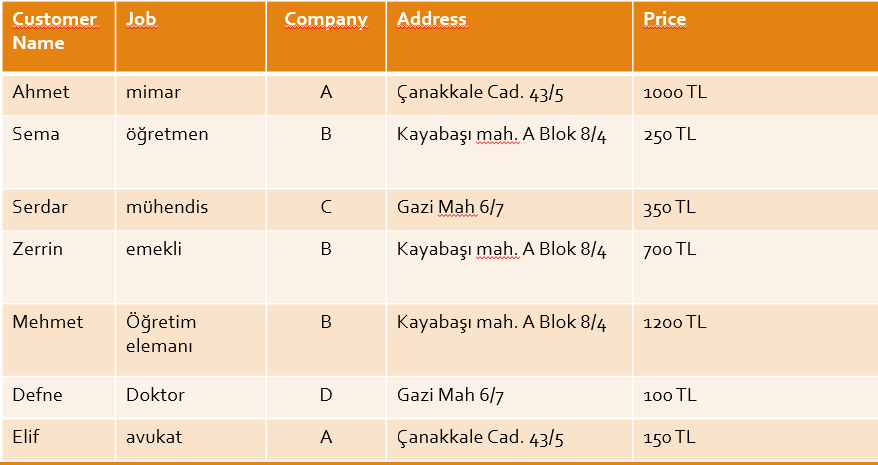
Why we use the database?¶
- Problems with lists;
- For example, the address of company B has changed.
- Address information in 3 lines should also change
- If it is missing, information inconsistency occurs.
- It can cause both a waste of time and an error.
Why we use the database?¶
- Problems with lists;
- For example, company A no longer works with your company,
- If you delete the record related to company A from the list, you will lose information such as customer information and company address where the product was sold.
Why we use the database?¶
- Problems with shared data;
- For example, different departments of your company need to display company information;
- Communication department: company, address
- Marketing department: company, price
- Customer service: customer name, job, company
Why we use the database?¶
- Problems with shared data;
- Sharing all of this information with all departments is inconvenient for different reasons.
- Security
- customer privacy
- etc.
Why we use the database?¶
- The biggest drawback for lists is that it combines different types of information into a table.
Why we use the database?¶
- For DMS, the process of placing different types of information in different tables is called normalisation.
- For the previous list;
- customers
- Worked companies
- sales information
Why we use the database?¶
- Customers
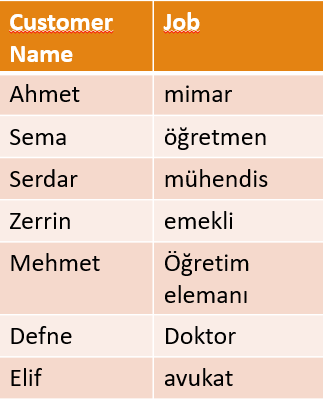
Why we use the database?¶
- Worked Companies
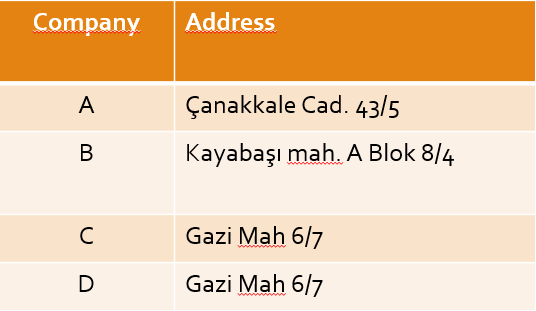
Why we use the database?¶
- Sales Information
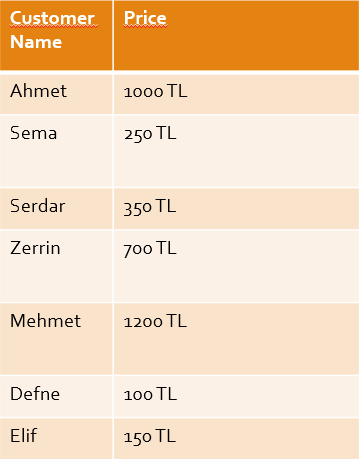
Why we use the database?¶
- When different types of information are placed in different tables, most of the problems related to the following works are eliminated;
- changing information
- deleted information
- with shared information.
Why we use the database?¶
- When different types of data are in different tables;
- Relationships need to be established in order to answer questions such as which customer bought the product from which company ?
Why we use the database?¶
- Relations
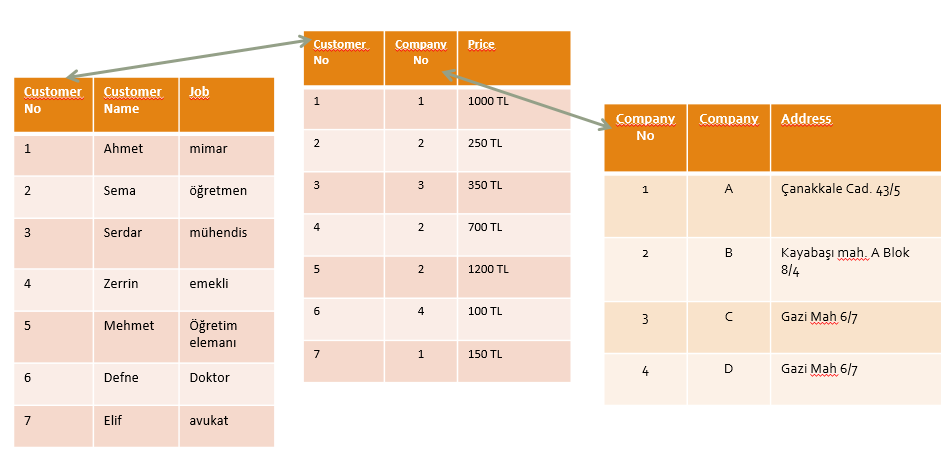
Why we use the database?¶
- Relations
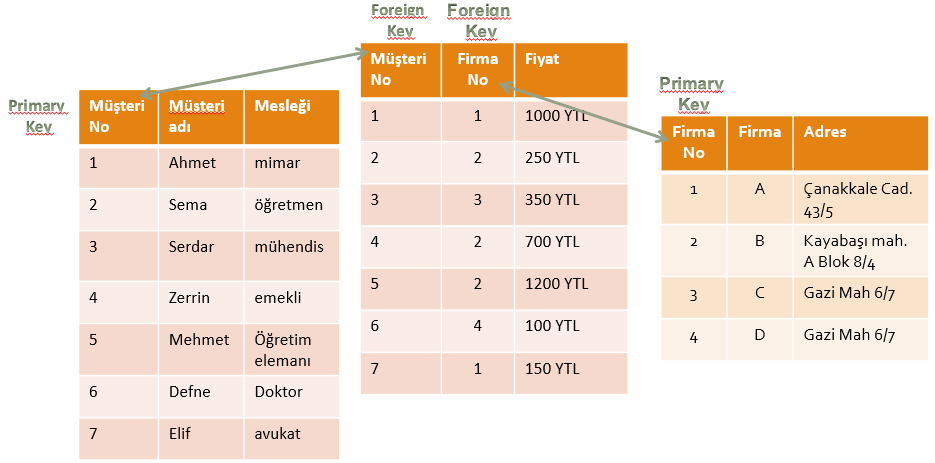
Why we use the database?¶
- Joining tables
- So what is done to get the initial holistic list?
- SQL language is used.
What is database management system?¶
- Components of the database system;

What is database management system?¶
- The user does the following:
- It uses the database to perform its work,
- Adds new data
- Modify existing data,
- deletes data,
- Reads data through queries or reports
What is database management system?¶
-
Database Application:
-
It is one or more computer programs that provide communication between the database management system and the user.
- Creates queries and reports,
- Receives data from the user or sends the data to the user,
What is database management system?¶
-
Database Management System:
-
It receives requests from the application and performs them by reading or writing data on database files,
-
It reads SQL statements and converts these statements into instructions for the computer's operating system to read or write data on database files.
What is database management system?¶
-
Functions of Database Application
-
Functions of Database Management System
What is database management system?¶
-
Database Application:
-
Creates and processes forms,
- Creates queries and forwards queries,
- Creates and operates reports,
- Performs application logic,
- Controls the application.
What is database management system?¶
-
Database Application:
-
Creates and processes forms, for example, in a web-based application;
-
Creates HTML and other web formats to be displayed on the user's computer,
- When the user fills out the forms and sends the data back, it sends the DBMS requests for the necessary adjustments.
- If an error occurs in the process, it displays the necessary message to the user and/or performs the necessary actions.
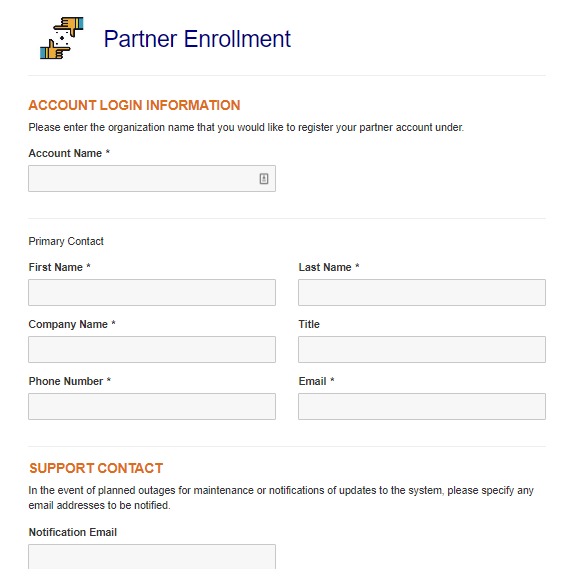
What is database management system?¶
- Database Application:
- Creates queries and forwards queries,
- Generates the query to be transmitted to DBMS,
- These requests are usually expressed in SQL,
- When the query is executed, the results are formatted and transmitted to the user,
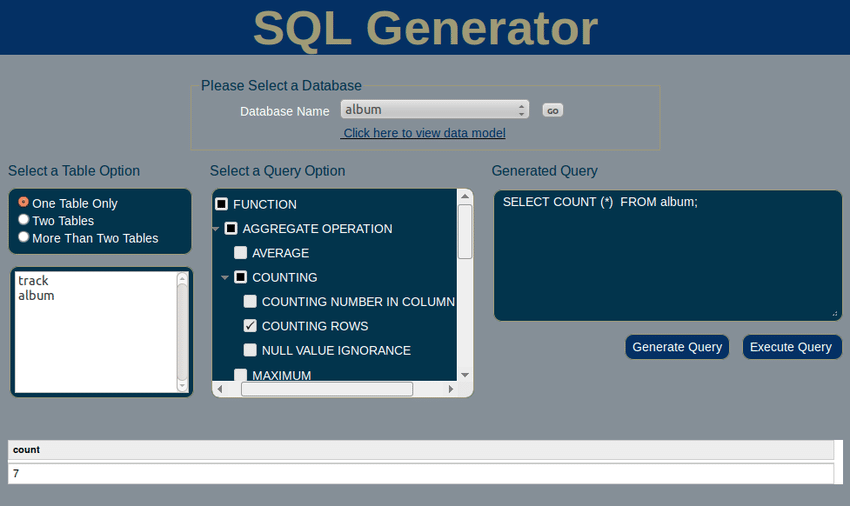
What is database management system?¶
- Database Application:
- Creates and operates reports,
- Data is requested from DBMS through queries and query results are presented in the form of reports,
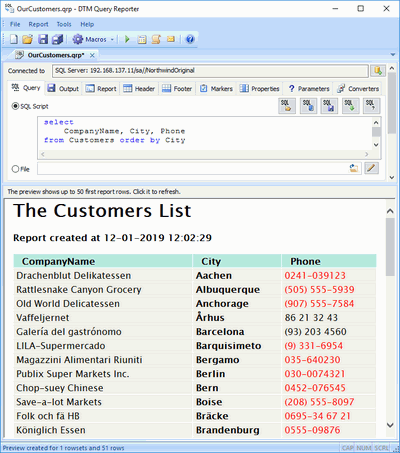
What is database management system?¶
- Database Application:
- Performs application logic,
- For example, the user made a request for 10 units, but 8 units were found in stock,
- What happens depends on the logic of the program,
- It is the task of the application program to implement the appropriate logic.
What is database management system?¶
-
Database Application:
-
Controls the application
What is database management system?¶
-
The Database Management System does the following:
-
Creating the database, creating the tables,
- Reading data from the database and updating the data,
- Realizing the limitations on data values,
- It prevents one user's process from interfering with the other user's process.
- Allowing users to take action within the limits of their authority,
- Backing up data in the database.
Database¶
-
Database is data stores that consist of following related records.
-
Metadata (metadata)
-
index
-
stored procedure
-
trigger
-
data integrity (referential integrity)
Database¶
- Data about the structure of the database is called metadata.
- Table names
- column names
- Properties of tables and columns etc.
Database¶
- Metadata example:
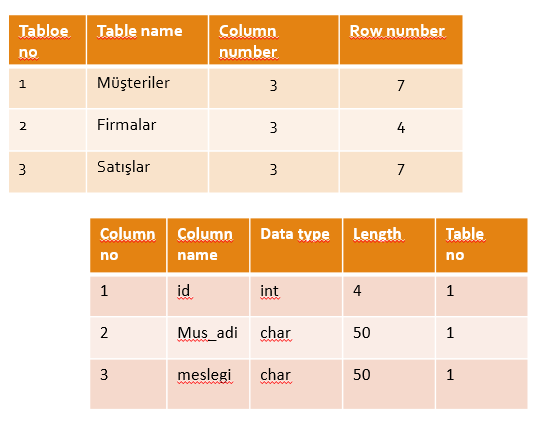
Database¶
- Some databases contain application metadata.
- This metadata defines application components such as forms and reports.
- DBMS has several tools to show the structure of the database.
Database¶
- At the same time, there are indexes used in databases to improve the performance of the database.
- Indexes are tools that show which records are in which tables.
Database¶
- Stored procedures are compiled SQL statements.
- Because they are database objects, they are directly included in the database manager program.
- For example, stored procedures can be created for the purpose of taking a backup of data in a table or remove a backup of data that has passed more than a year.
Database¶
-
Stored procedures are codes for doing a specific duty defined in a database.
-
These codes are optimized because they are compiled at the same time as they are written, and they are the fastest ready-to-run codes.
Database¶
- A trigger is a special type of stored procedure that automatically runs when an event occurs in the database server.
- The events that trigger the triggers on the table are insert, update, delete events.
Database¶
- For example, it is a typical use of triggers to decrease or increase the amount of stock as a result of stock movements.
Database¶
- Since both triggers and stored procedures are codes on the database, they run on the database server.
- It is one of the powerful components of the Client & Server architecture.
- There are databases in client & server architecture as follows.
- Oracle, Sybase, MS SQL, Interbase, FireBird etc.
Database¶
- Because they work on the server where the data is located, the data does not go back and forth between the client and the server.
- Therefore minimal data is sent from the server to the client side.
Database¶
- In a relational database
- Let's assume that the department information of the person in the PERSONNEL table is kept in the SECTION_NO variable and
- the name of the department is in the SECTION table.
Database¶
- If the section numbered as 1 is used by any personnel, the record with SECTION_NO value of 1 from the SECTION table must not be deleted.
- Protecting data integrity by making such controls is called referential integrity.
Database¶
- The use of triggers is highly preferred in order to ensure data integrity.
Database¶
-
There can be 3 types of database systems:
-
used by a single person,
- used by small businesses,
- Used by large international companies
Database¶
-
used by a single person,
-
Painter
- Whose house was painted, when and how much?
- What was painted in the painting, what colors and styles were used?
- Who referenced others? Who are the referrals?
Database Systems¶
used by a single person,
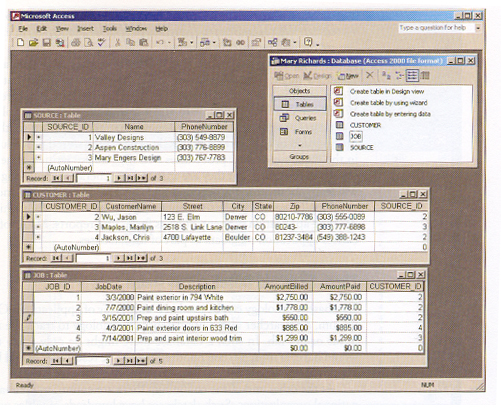
Database Systems¶
used by a single person,
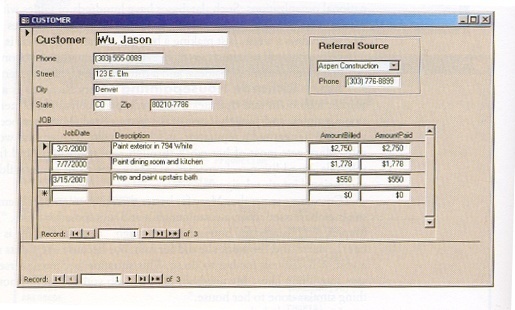
Database Systems¶
used by a single person,
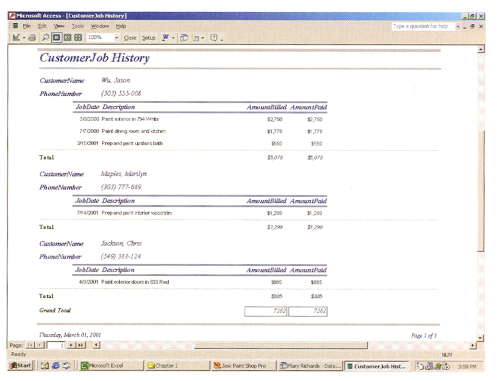
Database Systems¶
- used by small businesses,
- What are the rented musical instruments? How much is it rented?
- Which musical instruments are rented the most?
- Who made the lease? (multi-user database)
- The same instrument cannot be selected by two different dealers at the same time!
Database Systems¶
used by small businesses,
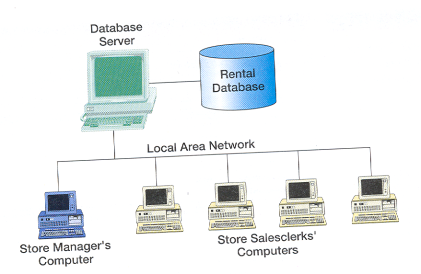
Database Systems¶
used by small businesses,
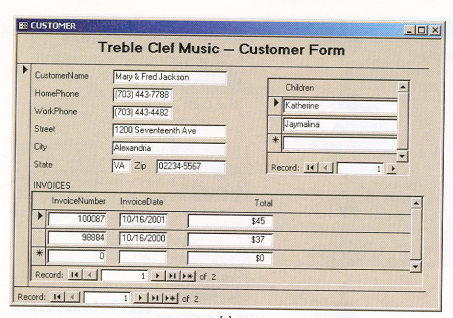
Database Systems¶
used by small businesses,
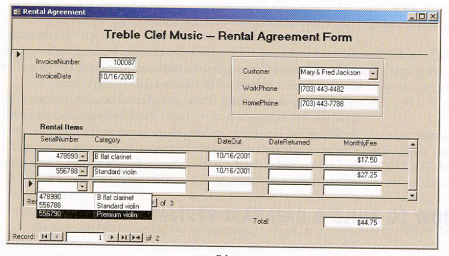
Database Systems¶
used by small businesses,
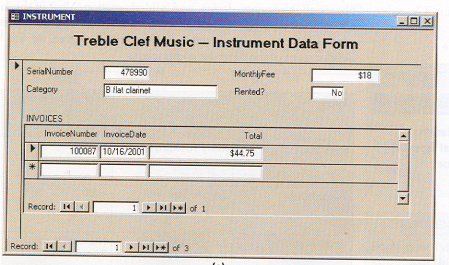
Database Systems¶
- Used by large international companies,
- Driver licensing and auto registration office
- It has 52 different centers
- Accidents of people, traffic violations are kept,
- Is the license renewable, are there any limitations?
- Database is used by 100s of people
- Licensing and registration staff
- Those who follow law enforcement
- Finance department staff
- Reachable 24 hours a day, 7 days a week
Database Systems¶
Used by large international companies,
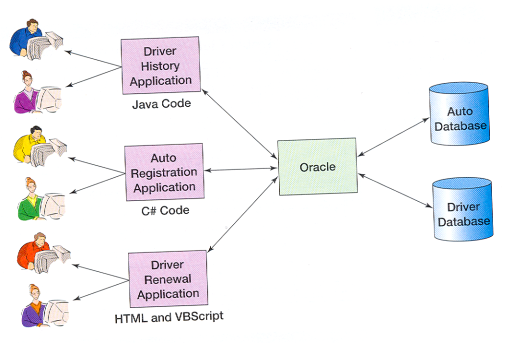
References¶
-
Kroenke, D. M. (2006). Database Processing: Fundamentals, Design, and Implementation .Pearson Education International. Singapore,Canada,Japan.
\(End-Of-Week-2-Module\)